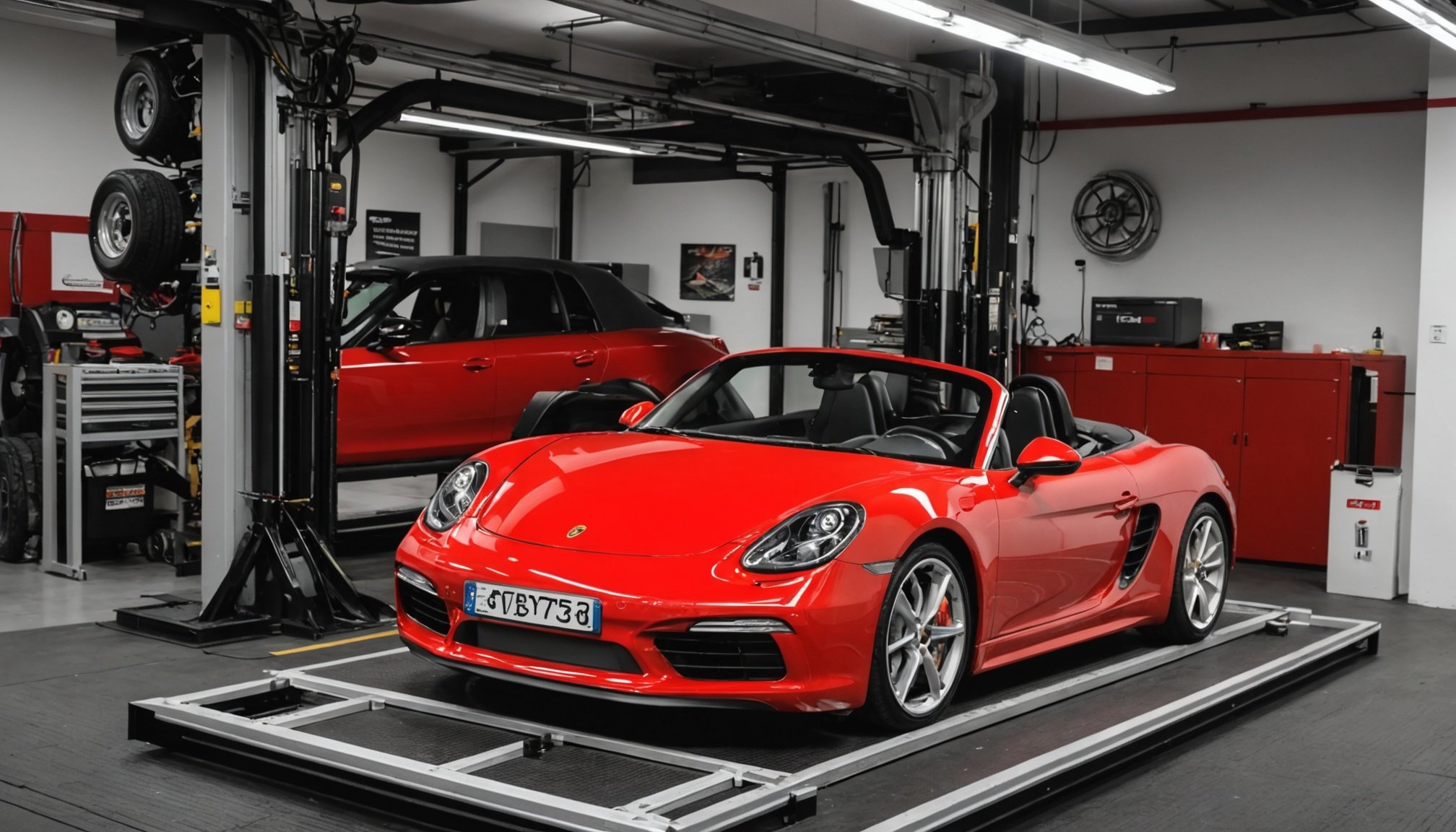Importance of Cooling Hoses in Preventing Overheating
In the maintenance of your Porsche Boxster, the cooling system plays a critical role in ensuring optimal performance and preventing overheating. A vital component within this system are the cooling hoses, essential for transporting coolant between the engine and radiator. When these hoses are functioning properly, they assist in regulating engine temperature effectively.
Damaged or worn cooling hoses can cause significant issues in the cooling system. Cracks or leaks in the hoses may lead to a drop in coolant levels, resulting in ineffective heat dissipation. When a Porsche Boxster begins overheating, it could suffer from reduced performance, increased wear, and even potential engine damage. Therefore, maintaining the integrity of the cooling hoses is paramount.
Also read : Unlock the thrill of the player one mystery box experience!
Regular inspections of the cooling hoses can help identify early signs of wear and tear, such as bulging, cracking, or leakage. Conducting these inspections as part of routine Porsche Boxster maintenance can prevent unexpected breakdowns and costly repairs. Ensuring that all components of the cooling system are functioning optimally not only protects the engine but also prolongs the lifespan of your vehicle. By prioritising these simple preventative measures, overheating incidents can often be avoided, keeping your Porsche Boxster in top condition.
Identifying Cooling Hose Issues
When dealing with cooling system woes, being able to identify hose problems is essential. Failing cooling hoses often present signs that are quite unmistakable. One of the clearest indications of trouble is overheating. If engine temperatures are consistently higher than normal, a damaged or leaking hose could be at fault.
Also read : Qatar's diplomatic chief outlines a roadmap for global cohesion
Performing a visual inspection can be incredibly revealing. Look for any visible signs of wear like cracks, bulges, or soft spots on the hoses. These are often telltale signs that the material integrity is compromised. Pay close attention to the areas where the hoses connect, as leaks often originate from these junctions.
To bolster your inspection routine, employ diagnostic tools. Pressure testers can simulate operating conditions, revealing leaks that aren’t obvious on a static engine. Additionally, infrared thermometers can help spot inconsistencies in temperature along the length of the hoses, indicating potential blockages or weak points.
Regular checks and diagnostics not only spot potential issues but also extend the lifespan of your engine’s cooling components. By being proactive, you can keep your vehicle running smoothly and prevent costly repairs down the line. Maintaining those hoses is not just about prevention—it’s about confidence in your car’s performance.
Choosing the Right Cooling Hoses
Selecting the appropriate cooling hoses for your Porsche Boxster involves understanding different hose materials and ensuring compatibility with your vehicle. Primarily, hoses are manufactured in materials such as rubber, silicone, and stainless steel. Rubber hoses are common due to affordability and flexibility, but they may degrade over time. In contrast, silicone hoses offer superior durability and temperature resistance, making them ideal for high-performance settings. Stainless steel options excel in strength and longevity but can be more expensive and less flexible.
When considering compatibility, assess the specific requirements of your Porsche Boxster’s engine and cooling system. Ensure that the materials can withstand the operating temperatures and pressures typical to your car, as this will prevent premature failure.
Another critical decision is choosing OEM vs. aftermarket cooling hoses. OEM hoses, designed specifically for your vehicle model by the original manufacturer, ensure perfect fit and reliability. On the other hand, aftermarket options may provide cost savings and customization. They might include improved materials or enhanced performance features but necessitate careful verification of compatibility.
Ultimately, balancing material benefits, vehicle needs, and cost-effectiveness will guide your choice of cooling hoses.
Tools Required for Hose Upgrade
Upgrading your vehicle’s cooling hoses can be a straightforward task with the right required tools and installation equipment. Here’s a breakdown of what’s essential for a successful DIY maintenance project.
First, you’ll need a reliable set of pliers. They come in handy for gripping and twisting old hoses off, ensuring a neat removal. Pliers with insulated grips can offer better safety equipment options, protecting you from accidental slips.
For cutting hoses to the desired length, a utility knife with a sharp blade is essential. Ensure it’s sturdy and easy to handle, allowing precise cuts without fraying the hose ends. A well-maintained blade minimizes the risk of inaccuracy.
A torque wrench is another critical tool, ensuring clamps are tightened to the manufacturer’s specifications. This prevents leaks and ensures proper hose function. Investing in a high-quality wrench increases the reliability and longevity of the installation.
Lastly, don’t overlook safety. Always equip yourself with gloves and eye protection to guard against coolant spills and sharp edges. These safety tools not only protect but also enhance your confidence as you handle potentially hazardous materials.
Step-by-Step Guide to Upgrading Cooling Hoses
Upgrading your cooling hoses is a crucial step in enhancing your vehicle’s performance. This guide will walk you through the installation process and ensure your system functions effectively post-upgrade.
Preparing for the Upgrade
Before beginning the installation process, gather necessary tools and components. Locate the cooling hose system in your vehicle. Ensure the system is cooled down to prevent injury. Disconnect the battery for safety and drain the coolant into a clean container for reuse.
Comprehensive Installation Process
To successfully complete the cooling hose upgrade steps, follow these practical tips. Carefully remove old hoses using a twisting motion, being cautious not to damage surrounding parts. Install new hoses by attaching them securely to the fittings. Use high-quality clamps to prevent leaks and ensure durability. Torque appropriately, following manufacturer specifications for optimal performance.
Testing for Proper Functionality
Post-installation, the importance of testing the cooling system cannot be overstated. Refill the coolant reservoir and reconnect the battery. Start the engine and let it idle, observing for leaks or irregular temperature changes. Repeat this process after the engine has warmed up. Successfully testing ensures the cooling system operates efficiently and prevents future issues.
Common Pitfalls to Avoid
In the realm of cooling systems, avoiding installation mistakes is critical for optimal performance. Installation errors often arise from incorrect sizing or misalignment of cooling hoses. A hose that is either too tight or too loose can lead to stress, eventually resulting in cracks or detachment.
Maintenance oversights can significantly affect cooling system longevity. Regular inspections can identify early signs of wear or potential leaks, preventing unexpected failures. Neglecting these check-ups can result in hose degradation, reducing system efficacy over time.
Cooling system failures frequently occur due to inadequate maintenance practices. Accumulation of debris or scale within hoses can obstruct efficient fluid passage, leading to overheating and pressure build-up. This not only stresses the hoses but also impacts overall system performance.
Practical Tips for Hose Longevity
- Regular inspections: Conduct routine checks for wear and leakage.
- Correct installation: Ensure proper sizing and alignment during setup.
- Schedule periodic maintenance to prevent debris accumulation.
These mindful practices help maintain optimal system performance and extend the lifespan of cooling hoses, ultimately ensuring reliability and efficiency in your cooling systems.
Importance of Regular Maintenance Practices
Establishing a maintenance routine is crucial for ensuring the long-term efficiency of your vehicle’s cooling system. Regularly inspecting and servicing cooling hoses can prevent costly breakdowns and ensure that your engine remains at optimal performance levels.
Cooling Hose Maintenance
To maintain cooling hoses, check for any visible signs of wear such as cracks, bulges, or leaks. Addressing these issues promptly can prevent coolant loss which could lead to overheating. It’s also wise to replace hoses every four years or 60,000 miles as a precaution.
Cooling System Check-Ups
Regular check-ups on the cooling system can help identify potential problems before they escalate. Key checks include examining the radiator for blockages and ensuring the coolant is clean and at the proper level. A malfunctioning thermostat or radiator cap can also lead to overheating, so verifying their functionality is part of these check-ups.
Benefits of Maintenance
Diligent maintenance practices are not just about preventing overheating issues. They also contribute to the overall health and efficiency of the vehicle. By optimizing performance, your vehicle is likely to run smoother, providing better fuel efficiency and reducing wear on other components. Consistent maintenance ensures reliability and extends the lifespan of the vehicle, making it a worthwhile investment.











